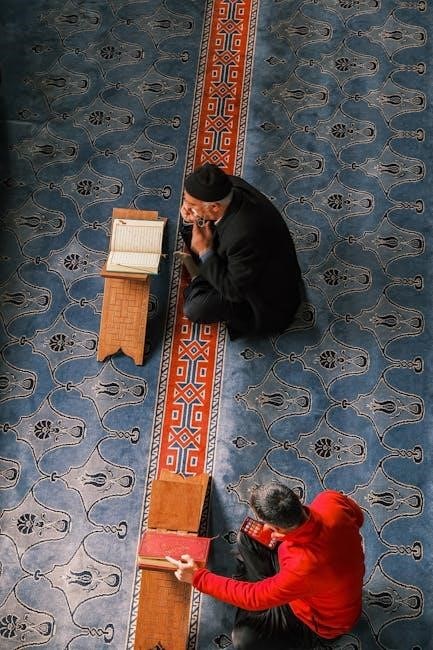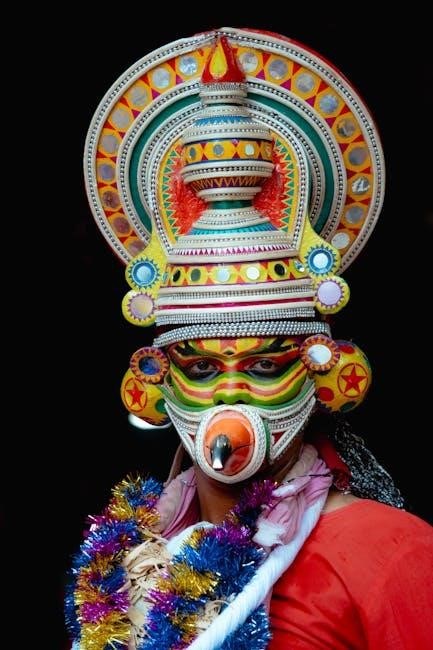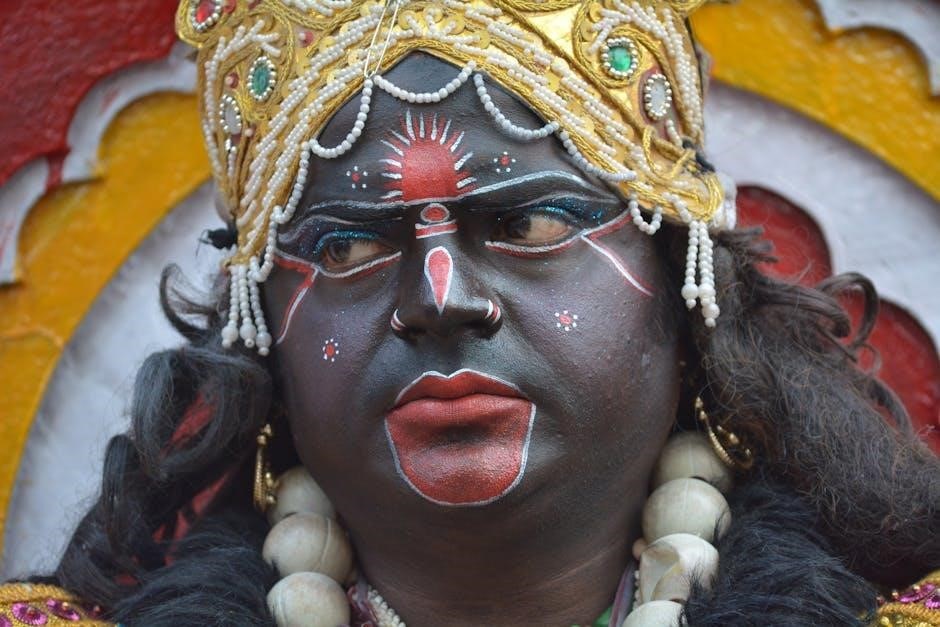
Overview of the Third Degree in Freemasonry
The Third Degree, also known as Master Mason, is considered the most dramatic and sublime degree․ It emphasizes immortality, moral conduct, and reflection on life․ The ritual encourages courage, fidelity, and devotion to God, marking the completion of Craft Masonry․
The Master Mason Degree
The Master Mason Degree is the culmination of Craft Masonry․ It’s a degree of reflection․ The First and Second Degrees deal with active life․ It strengthens knowledge through symbolism and spiritual dimensions, emphasizing courage, fidelity, devotion, and the immortality of the soul․
Significance and Symbolism
The Third Degree, the Master Mason degree, is steeped in significant symbolism that aims to teach profound lessons․ It serves as a powerful allegory for life, death, and resurrection, focusing on the immortality of the soul and the importance of moral conduct․ The symbolism encourages contemplation of how these aspects should influence our actions and decisions․
Key symbols within the degree represent courage, fidelity, and devotion to God․ These symbols are not merely decorative; they are intended to provoke introspection and a deeper understanding of Masonic principles․ The degree encourages the candidate to reflect on their duties and responsibilities, both within the lodge and in their daily lives․
Furthermore, the Third Degree emphasizes the completion of the candidate’s journey through the three degrees of Craft Masonry․ It signifies a transition from active life to a life of reflection and wisdom․ The lessons learned and the symbols encountered during this degree are meant to guide the Master Mason in his continued pursuit of knowledge and self-improvement․
Emphasis on Immortality and Moral Conduct
The Master Mason degree places significant emphasis on the concept of immortality, urging members to contemplate the eternal nature of the soul․ This contemplation isn’t merely philosophical; it serves as a foundation for ethical living and moral conduct․ The degree suggests that our actions in this life have lasting implications, encouraging us to strive for virtue and integrity․
Moral conduct is presented as a direct consequence of understanding the importance of immortality․ Knowing that our actions resonate beyond our earthly existence motivates us to make ethical choices and to treat others with respect and compassion․ The Third Degree reinforces the importance of honesty, justice, and brotherly love as guiding principles in a Master Mason’s life․
The ritual encourages members to act with courage, fidelity, and devotion to God․ It is a reminder that moral responsibility extends beyond personal gain and encompasses a commitment to the well-being of society․ The degree emphasizes that a Master Mason should strive to be a positive influence, exemplifying the virtues that Freemasonry espouses․

Ritualistic Aspects of the Third Degree
The Third Degree features extensive ritual, considered the most dramatic of the Masonic degrees․ It involves scripted words and actions, symbolizing the principles of Freemasonry and emphasizing the importance of moral conduct and immortality․
Opening the Lodge in the Third Degree
Opening a Lodge in the Third Degree is a formal procedure involving specific roles and duties․ The Worshipful Master initiates the process, often confirming the Lodge is properly tyled, ensuring only qualified members are present․ Officers rise and assist, responding to the Master’s inquiries about their responsibilities․
The Senior Warden and Junior Warden play crucial roles, verifying the Lodge’s security and the members’ qualifications․ The process includes specific questions about the Lodge’s nature, support, and how it’s governed․ These questions reinforce the principles of Freemasonry and the importance of adhering to established rules and traditions․
The opening ceremony sets the stage for the degree work, creating a sacred space for reflection and instruction․ The Master Mason degree opening emphasizes the importance of courage, fidelity, and devotion, preparing members for the solemn lessons and experiences of the Third Degree ritual, reinforcing the values of Freemasonry․
Key Points and Stages of the Ceremony
The Third Degree ceremony, also known as the Raising, involves several key points and stages that are essential to understanding its symbolism and meaning․ The candidate is prepared to be raised, signifying a transition to the sublime degree of a Master Mason․
A central part of the ceremony involves perambulations, where the candidate is led around the Lodge, often examined on their knowledge from previous degrees․ These perambulations serve to test and reinforce the candidate’s understanding of Masonic principles․ Key teachings are imparted, emphasizing the immortality of the soul and the importance of moral conduct․
The Raising ceremony is a dramatic experience, with elements of darkness and prayer creating a solemn atmosphere․ The candidate strengthens their knowledge, reflecting on how these lessons should influence their actions and decisions․ The ritual culminates in the candidate being raised to the degree of Master Mason, signifying the completion of their journey through the Craft degrees․

The Raising Ceremony
The Raising Ceremony involves elements of darkness and prayer, creating a solemn atmosphere․ The candidate is prepared to be raised, completing their journey through the Craft degrees․ This signifies a transition to Master Mason․
Darkness and Prayer in the Lodge Room
The Raising Ceremony, a central part of the Third Degree, often commences with a Lodge Room shrouded in near darkness․ This deliberate dimming of light creates an atmosphere of solemnity and introspection․ The darkness is not merely a theatrical element but a symbolic representation of ignorance and the unknown, from which the candidate is about to emerge into enlightenment․
Accompanying this darkness is the invocation of prayer, a crucial aspect of the Masonic ritual․ The prayer serves to seek divine guidance and blessings upon the candidate’s journey towards becoming a Master Mason․ This act underscores the importance of faith and the recognition of a higher power within the Masonic framework․
The prayer also aims to create a sacred space within the Lodge Room, setting the stage for the transformative events that are about to unfold․ It signifies a turning away from the mundane and a focus on the spiritual and moral lessons that the Third Degree imparts․ The combination of darkness and prayer is designed to deeply impact the candidate, preparing them for the profound experience of the Raising Ceremony․ This sets the tone for serious reflection․

Masonic Ritual and Symbolism
Masonic ritual is the heart of Freemasonry, comprising scripted words and actions performed during degree work within a Masonic lodge․ These rituals are rich in symbolism, designed to illustrate the principles and tenets of the fraternity; Symbolism serves as a powerful tool for teaching moral and ethical lessons․
The Third Degree, in particular, is replete with symbolism related to death, resurrection, and the immortality of the soul․ The candidate’s journey through the degree is a symbolic representation of life’s trials, the inevitability of death, and the hope for spiritual rebirth․ Every aspect of the ritual, from the tools used to the gestures performed, carries a deeper meaning that resonates with the candidate on a personal level․
Masonic symbolism extends beyond the Lodge Room, influencing the daily lives of its members․ By understanding and internalizing these symbols, Masons are encouraged to live virtuous lives, uphold moral principles, and contribute positively to society․ The rituals and symbols serve as constant reminders of their obligations and the values they have pledged to uphold, fostering a sense of brotherhood and shared purpose․ Masonic ritual is a guide to life․

Resources for Further Study
For those seeking to deepen their understanding of the Third Degree in Freemasonry, a wealth of resources is available․ Masonic literature, including handbooks and monitors, offers detailed explanations of the rituals, symbols, and allegories associated with the degree․ These texts often provide insights into the historical context and philosophical underpinnings of the Masonic tradition․
Numerous websites and online forums are dedicated to Masonic research and education, providing access to articles, essays, and discussions on various aspects of Freemasonry․ These platforms can be valuable for connecting with other Masonic scholars and enthusiasts, sharing insights, and exploring different perspectives on the Third Degree․
Furthermore, many Masonic lodges and grand lodges offer educational programs and study groups designed to enhance members’ knowledge of Masonic history, philosophy, and ritual․ Participating in these programs can provide a structured learning environment and opportunities for meaningful discussions with fellow Masons․ Investigating different rituals is a great way to learn․
By engaging with these resources, individuals can embark on a journey of continuous learning and discovery, gaining a deeper appreciation for the rich symbolism and profound teachings embedded within the Third Degree․